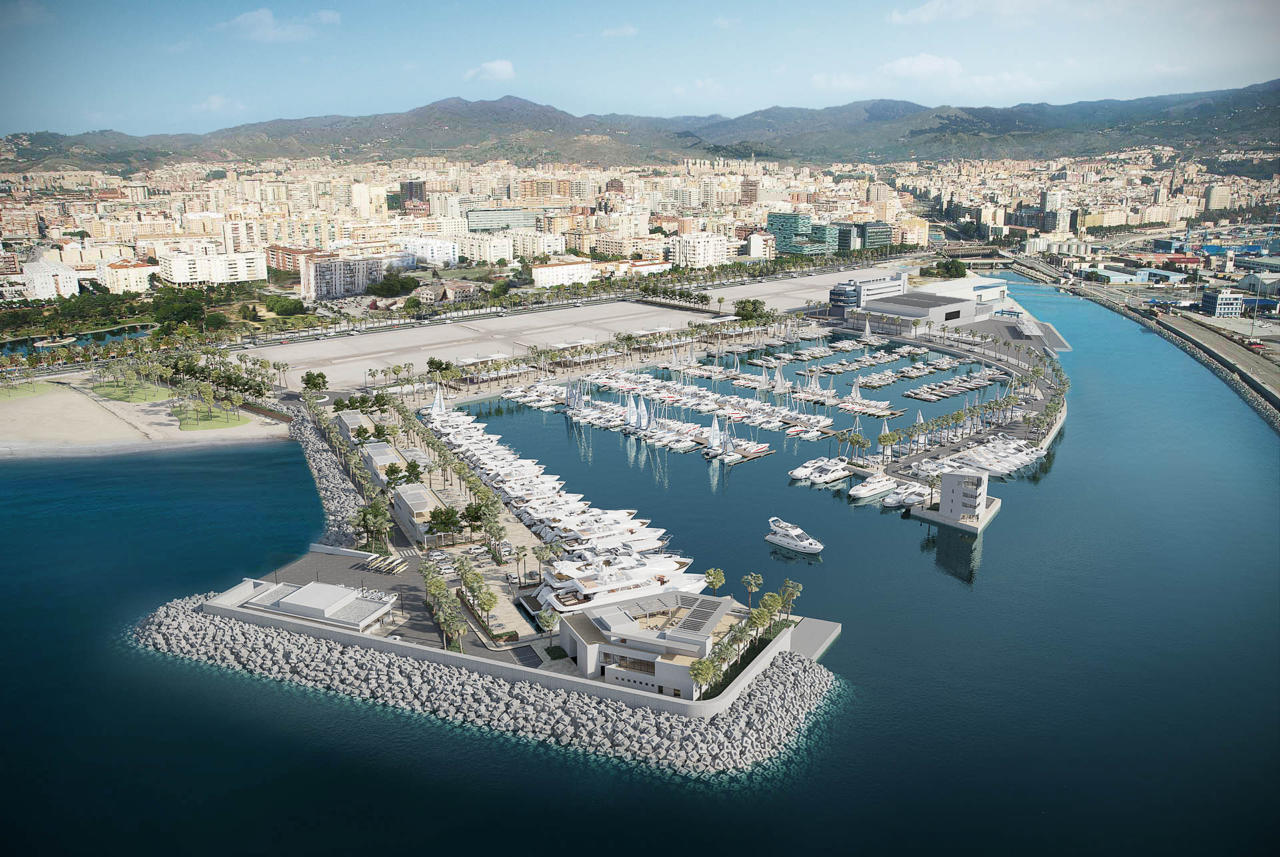
SAN ANDRES PORT, MALAGA
Location: Port of Malaga
Author: ESTUDIO SEGUÍ
Architect: José Segui Pérez
Project Date: 2022
Promotor: Marina Malaga San S.L.
The Puerto Deportivo de San Andrés project was the reason for a contest organized by the Port Authority of Malaga, awarding its concession to the company “Marina Málaga San SL”, in whose technical drafting of the proposal Estudio Segui participated in collaboration with Ingenierías Igy Marinas and Ocean Capital Partners. It is an intervention that organizes the port land at the mouth of the Guadalmedina River through an attractive proposal for a Marina strategically located in the most urban area of the city adjacent to its Historic Centre, Maritime Cruise and Railway stations “María Zambrano” and as the head of the new residential extension of the Paseo Marítimo de Poniente that connects it with the international airport and the conurbation of the Costa del Sol.
The main criterion of the architectural planning has been to guarantee the visual transparency of the built complex to avoid the “rear” effect that could occur with its urban environment, which is referred to in its visual and spatial continuity. At the same time, a series of open spaces are projected between the built bodies that, like squares, support the commercial activity that is aligned to the port façade with its front facing the moorings of the boats that would make up its main nautical landscape.
Regarding the accesses, the interiors of the port area are proposed differently, which require greater control of visitors and boat users, and whose connections would be made through the access control of the main roundabout that would connect with the Avenida de Poniente. A second connection is planned at the opposite end to guarantee external communication from the service perimeter road to commercial uses and access to the public car park.
At both ends of its breakwaters, the Sailing School is located with an extensive teaching program, and the Yacht Club with its cafeteria facilities, maritime shop, nursery, gym-spa, meeting rooms and large terraces with magnificent views towards the port that is finished off with a solarium on the roof floor with its wide terrace spaces. Likewise, some spaces are reserved for removable leisure facilities such as the “Tourist Pier” and the attractive presence of a large “Ferris Wheel” that would provide an interesting visual reference to the marina and the city.
In this sense, it has not been a question of projecting exclusively a marina but also an urban piece as a connecting link with the city and its residential extensions towards the litoral de Poniente (Paseo de Antonio Machado), providing an attractive offer to the growing demand of the city and an important qualification of both its commercial offers and its public spaces with its large garden areas and terraces-viewpoints, where its walks and squares are integrated into the volumes of its architecture offering an urban image of high landscape and environmental quality.
Likewise, energy saving becomes an important priority, and for this purpose the installation of a Photovoltaic Plant has been planned on the roof of the “Nave de Marina Seca” that can supply the public lighting of the urbanization of the port area, as well as the installation of a desalination station that lowers the cost of water supply, and a generator set with sufficient capacity to cover the basic needs of the port complex.
The project contemplates the management of 51,475 m² of land area, and 63,000 m² of water surface area, making a total of 114,475 m² of concession area, together with the construction of a set of buildings forming a nautical sports complex with all services of first level, highlighting the roof surfaces of the commercial areas and the Yacht Club (5,000m2), the Dry Marina (5,000m2), the Sailing School (380m2), the Captaincy (275m2), public parking (4,800m2 below ground) and the pedestrian and garden areas (with an area of 30,000m2).
